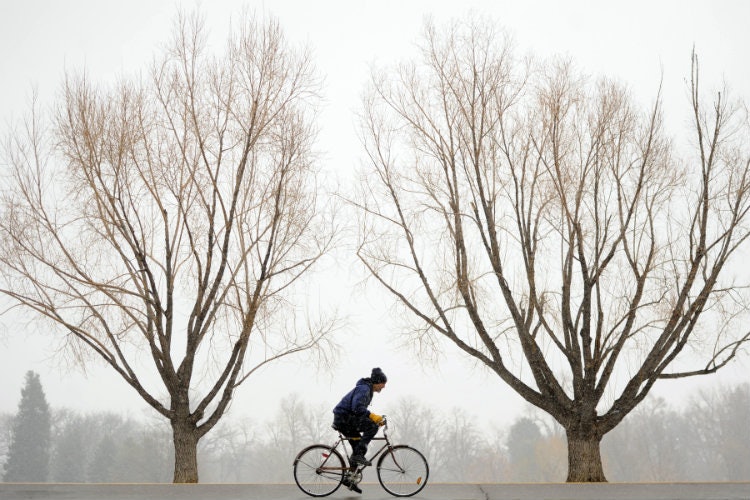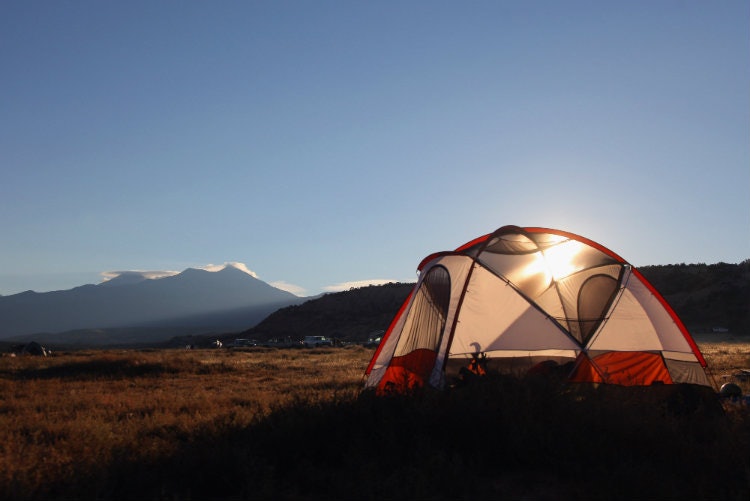

The USA is home to some of the most beautiful landscapes in the world, from sun-kissed coastlines and deserts to vast wetlands and mountain ranges. One of the best ways to see the great American outdoors is by bike. Why? Travelling on two wheels is not only immersive – it can take you totally off the beaten track.
While plenty of companies offer organised US cycling tours, they can be pricey. Luckily, you don’t need to be a hardcore cyclist to plan your own tour – plus, you’ll get bonus biker points for carrying your own kit. Here’s how to get started.
Plotting your route

To discover the expanding network of US cycle routes, try the Adventure Cycling Association (adventurecycling.org). The ACA offers routes mapped specifically with cyclists in mind, covering central and southern states, down the east and west coasts, along the Mississippi and more.
If you’d like to plan your own bespoke route, try stitching sections of bigger routes together with the help of cycling resources from state transport departments (pedbikeinfo.org/data/state.cfm) – handy if you don’t fancy the full 4000+ miles of the Trans-America Trail. Different states have different rules, but generally speaking the only roads cyclists can't use are interstates. Highways are usually fair game, though some are more suitable for cycling than others.
Most state transport departments have maps detailing cycling paths and suitable roads, but feeling safe is subjective; while some cyclists prefer smaller, isolated roads, others will feel perfectly safe on the shoulder of a highway. But be warned – some shoulders are bigger than others and some cycling paths aren’t what most roadies might expect, but rather a gravel or sand track. A quick check on a Google Street View map should give you a better idea of the size of a shoulder, the levels of traffic and other possible issues. Local cycling clubs (usacycling.org/clubs) are also a great resource for advice on their specific area.
Terrain, weather, fitness

The diverse landscape and natural beauty of the US is a major draw for a trip like this, but do think about the implications of terrain and weather. For example, only an ill-prepared travel writer (me) would start their journey in Massachusetts in April and finish in Texas in June. The general rule is to start in the south earlier in the year and finish up in the north later on. If you’re sticking to one state or region, check average temperatures before you book anything – I speak from experience when I say you don’t want to tackle the Blue Ridge Parkway in 30°C and 83 percent humidity.
It might sound obvious, but make sure you take your level of ability and fitness into account when planning a US bike trip. You don’t need to be super fit to cover a lot of ground, but you need to have reasonable expectations; you’re not going to want to tackle any mountain ranges in your first week unless you have built up a reasonable level of fitness. Likewise, you shouldn’t start out cycling 90 miles a day if you’re not in great shape. Whatever your fitness level, you’re going to want the odd rest day – there’s no getting around the fact that a hard plastic saddle wedged between the butt cheeks day in day out takes its toll.
What to pack

When packing for bike trips, less is always more.
Padded shorts and gloves are essential; don’t skimp on these – you will lose the feeling in your hands without padded gloves, which is bad news if you’re hoping to operate your brakes. You’ll wish you had lost the feeling in your undercarriage without decent padded shorts. Take a windproof jacket if it’s going to be chilly – waterproofing is trickier given the sweatiness of any truly water-resistant fabric.
Make sure you have a basic toolkit for any minor problems and learn how to use it. Many bike shops offer courses in simple repairs and you’d be wise to check them out if you’re not already au fait with tyre levers. Speaking of which, don’t assume spare inner tubes will cut the mustard if you wind up with a puncture. Take an extra tyre if you can find space for it.
Where to stay

Online cycling community, Warm Showers (warmshowers.org), offers opportunities to couch-surf with local cyclists, which is a great way to save money and meet like-minded people. Camping is another cheap option, but can add a considerable load to your kit if you’re going the whole hog. It’s worth remembering as you pack your gas cooker, crockery and kitchen sink that you’ve got to cycle it all up a mountain after your twentieth dinner of freeze-dried quinoa. Invest in a warm, lightweight sleeping bag and consider lighter tent-alternatives like a hammock – or if you’re going super renegade, a tarpaulin and some string.
Prepare yourself
Getting around (with bike in tow)
It is often cheaper to take your own bike, rather than hiring one. This is especially true for lengthy trips – so if you don’t have one, consider buying one on arrival. Touring bikes are preferable because they’re designed for heavy duty work, but a road bike will do the trick.
Virgin Atlantic and Emirates will fly your steed to the US for no extra charge, provided you don’t exceed their weight limits (23kg and 30kg respectively). Most other airlines charge for this, as do almost all domestic airlines in the US.
Trains are few and far between and often not bike-friendly, so getting your bicycle any distance without cycling requires a car – worth thinking about when you are planning your itinerary.
Potential hazards
Drivers in the US tend to be courteous and will give you a wide berth. They are less used to cyclists on the roads, however, and vehicles are typically larger. Freight lorries can feel pretty terrifying even from a reasonable distance – a rear view mirror is a good investment.
Dogs love a cyclist and can chase you quite far up the road if they’re unbound. Although usually harmless, they can be intimidating and could knock you off your bike if they’re stupid enough to get in your way. It can help to simply stop and show the beast you’re not actually all that interesting. If you’re feeling less inclined to take your chances, a quick spritz of water or an object lobbed in the distance may also do the trick.
Creepy crawlies are another potential bother – after one al-fresco pint in Natchez, Mississippi, I ended up with 41 bites on one foot. Tip: take DEET and don’t sit in an ant nest.
Coping out in the sticks

The USA is enormous; you can also spend the best part of a day without even passing a petrol station in the more remote areas, so make sure you have ample supplies. It can also feel far more isolated than expected for solo cyclists, which is why you’ll probably appreciate the companionship of a group or partner, at least for a portion of the trip. If you do decide to go it alone, keep loved ones and hosts aware of your plans and itinerary.
Out in the sticks the roads can also be a little unkempt and unsuitable for anything more delicate than an armoured tank. This is not the time to be without adequate insurance – potholes are abundant and dentistry is expensive. Don’t assume your normal travel insurance covers you or your bicycle for any issues that might arise and always read the small print.















